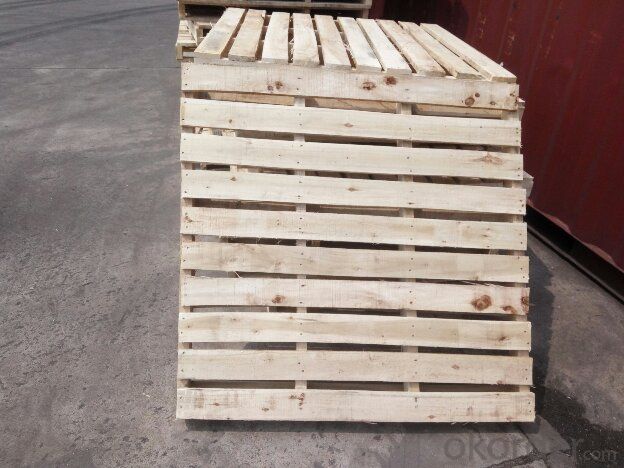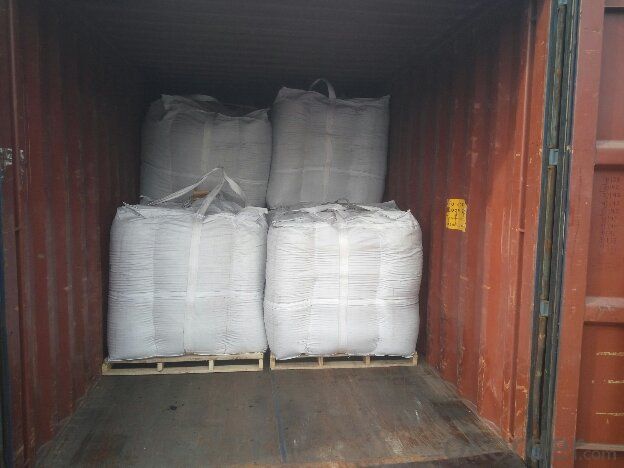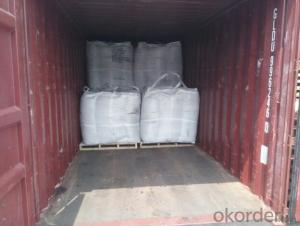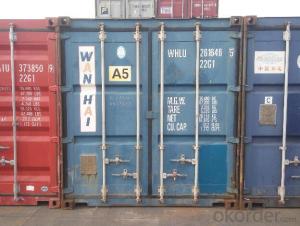10% Ash Foundry Coke used in Foundry Plant in Shandong
- Loading Port:
- Tianjin
- Payment Terms:
- TT OR LC
- Min Order Qty:
- 20.2
- Supply Capability:
- 1002 m.t./month
OKorder Service Pledge
OKorder Financial Service
You Might Also Like
Brief Introduction
Foundry Coke is the main fuel of melting iron in the oven. It can melt the materials in the over, make the iron reach great heat, and keep good air permeability by sustain stock column. Thus, the foundry coke should have the characteristics of big block, low reactivity, small porocity, enough anti-crush strengh, low ash and low sulphur.
The coke handled by our cooperation is made from superior coking coal of Shanxi province. Provided with the advantages of low ash, low sulphur and high carbon. Our coke is well sold in European, American, Japanese and South-east Asian markets. Our owned Coke plant are located in Shanxi Province and supplying of you many kinds of coke. it is more and more popular in the world
we supply Foundry Coke long-term, its characteristic is best strength, low sulfur and phosphorus,thermal stability.
Specifications:
ASH % | 8% max | 10% max | 12% max |
V.M.% MAX | 1.5% max | 1.5% max | 2% max |
SULFUR % | 0.65% max | 0.65% max | 0.7% max |
MOISTURE | 5% max | 5% max | 5% max |
Size | 80mm-120mm,80-150,100-150mm, or as request | ||
Features
1. Our quality is always quite good and stable which is producing and packing according to customers' requirements.
2. Putting Client profile into first, achieved mutual benefit.
3. Good partner on business. It's a good and wise choice for customers' to purchase from us. It's our great honor to cooperate with you.
4. We can supply documents as follows:
- bill of loading,
-Invoice,
-Packing List
-Insurance
-standard inspection pictures of the container as specified by INSPECTORATE
-or more requested by buyer.
Pictures


FAQ
1. What is the packing?
In 25kg bag/ In jumbo bags without pallet/ Two jumbo bags with one pallet/ or as customers’ request
2. What is the production capacity?
10 thousand tons per month
3 What is payment term?
Irrevocable LC at sight/ 20% down payment by T/T and 80% against BL copy byT/T/ or to be discussed
4 What is the service?
We will send sample to the third party(CIQ, CCIC, SGS,BV or to be discussed) for checking, and present the test certificate and loading repot of shipment.
- Q:What is the density of carbon steel and alloy steel?
- Material name density g/cm3Grey cast iron 7.7.7Malleable iron 7.7.4Cast steel 7.8Industrial pure iron 7.87Plain carbon steel 7.85Quality carbon steel 7.85Carbon tool steel 7.85Free cutting steel 7.85
- Q:What is carbon offsetting in the fashion industry?
- In the fashion industry, carbon offsetting refers to the act of compensating for the greenhouse gas emissions produced during the production, transportation, and disposal of clothing and accessories. This involves investing in projects or activities that reduce or eliminate an equal amount of carbon dioxide (CO2) from the atmosphere, thereby counterbalancing the emissions generated by the industry. Fashion has gained notoriety for its significant role in environmental degradation, with textile production, manufacturing processes, and transportation all contributing to carbon emissions. Carbon offsetting offers a means for fashion brands and companies to take accountability for their carbon footprint and strive towards reducing their environmental impact. There are various methods for implementing carbon offsetting in the fashion industry. One prevalent approach involves supporting renewable energy initiatives, such as wind farms or solar power plants, that generate clean energy and reduce reliance on fossil fuels. By investing in these projects, fashion brands can offset a portion of their emissions by supporting the production of renewable energy, which displaces the need for energy derived from fossil fuels. Another method of carbon offsetting involves reforestation or afforestation projects. Trees play a critical role in absorbing CO2 from the atmosphere, so planting trees or conserving existing forests can help offset emissions. Fashion companies can invest in projects that protect existing forests from deforestation or support initiatives that plant trees in areas affected by deforestation or land degradation. Furthermore, some fashion brands choose to offset their carbon emissions by investing in projects that capture and store carbon dioxide from the atmosphere, such as carbon capture and storage (CCS) technologies. These projects primarily focus on removing CO2 emissions from industrial processes, preventing their release into the atmosphere. It is important to recognize that carbon offsetting should not be viewed as a comprehensive solution to the fashion industry's environmental impact. While it can help mitigate some emissions, it is crucial for brands to prioritize reducing their carbon footprint through sustainable practices. This includes using eco-friendly materials, improving energy efficiency, and implementing circular fashion initiatives. In summary, carbon offsetting serves as a strategy for the fashion industry to compensate for the greenhouse gas emissions generated throughout the supply chain. By investing in projects that reduce or eliminate an equal amount of CO2 from the atmosphere, fashion brands can take strides towards minimizing their environmental impact and working towards a more sustainable future.
- Q:What about my world carbon board?
- First put the coal into the crusher and crush it into carbon powder (some versions are pulverized coal), so that they can be synthesizedCarbon powder, carbon fiberToner carbon powderCarbon fiber = carbon mesh (as if by name)Carbon fiber n.Put the carbon mesh into the compressor and compress the carbon plate
- Q:How does carbon impact soil health?
- Carbon is essential for maintaining soil health as it acts as a key component of organic matter. It helps improve soil structure, water holding capacity, and nutrient availability, thereby promoting the growth of beneficial soil microorganisms and enhancing overall soil fertility.
- Q:What are the different types of carbon-based polymers?
- Carbon-based polymers come in various types, each possessing unique properties and applications. Some commonly encountered variants include: 1. Polyethylene (PE): Esteemed for its exceptional strength and chemical resistance, PE is extensively utilized in packaging materials, plastic bottles, and pipes. 2. Polypropylene (PP): PP is akin to PE, but it boasts a higher melting point and superior heat resistance. This makes it a popular choice for automotive parts, textiles, and food packaging. 3. Polystyrene (PS): PS is a lightweight and rigid polymer frequently employed in packaging materials, disposable utensils, and insulation. 4. Polyvinyl chloride (PVC): PVC is a versatile polymer that can be either rigid or flexible based on the additives employed. It finds common application in pipes, electrical insulation, and flooring. 5. Polyethylene terephthalate (PET): PET is a robust and lightweight polymer commonly found in beverage bottles, food containers, and synthetic fibers. 6. Polyurethane (PU): PU is a flexible and durable polymer utilized in foams, coatings, adhesives, and textiles. 7. Polycarbonate (PC): PC is a robust and transparent polymer regularly utilized in eyeglass lenses, safety goggles, and electronic components. 8. Phenolic resins: Renowned for their exceptional heat resistance, these polymers are commonly employed in coatings, adhesives, and electrical components. These examples represent only a fraction of the diverse range of carbon-based polymers available. Each type possesses specific properties and applications, rendering them suitable for a wide array of industries and products.
- Q:What are the health effects of carbon monoxide poisoning?
- Carbon monoxide (CO) poisoning can have severe health effects. When inhaled, carbon monoxide displaces oxygen in the bloodstream, leading to oxygen deprivation in vital organs. Symptoms range from mild, such as headaches and dizziness, to more severe, including confusion, loss of consciousness, and even death. Prolonged exposure to high levels of carbon monoxide can result in long-term neurological damage or cardiac complications. Therefore, it is crucial to have carbon monoxide detectors in homes and ensure proper ventilation to prevent poisoning.
- Q:What are the alternatives to fossil fuels for energy production?
- There are several alternatives to fossil fuels for energy production, each with its own unique advantages and challenges. These alternatives include: 1. Renewable Energy Sources: Renewable energy sources, such as solar, wind, hydroelectric, and geothermal energy, harness the power of natural resources that are constantly replenished. Solar energy utilizes the sun's rays to generate electricity through photovoltaic cells, while wind energy converts the kinetic energy of wind into electrical power. Hydroelectric energy is generated by the force of flowing water, typically from dams or rivers, and geothermal energy taps into the heat generated by the Earth's core. These sources offer clean and virtually limitless energy, reduce greenhouse gas emissions, and promote energy independence. However, they may require a significant initial investment and have limitations based on geographic location and weather conditions. 2. Nuclear Energy: Nuclear power plants generate electricity through nuclear fission, which involves splitting atoms of uranium or plutonium to release energy. Nuclear energy is highly efficient and produces no greenhouse gas emissions during operation. It has the potential to provide consistent baseload power and can significantly reduce dependence on fossil fuels. However, it raises concerns about the storage and disposal of nuclear waste, the risk of accidents, and the potential for nuclear weapons proliferation. 3. Bioenergy: Bioenergy involves utilizing organic materials, such as agricultural waste, wood pellets, or dedicated energy crops, to produce heat, electricity, or biofuels. Biomass can be burned directly or converted into a gaseous or liquid form, such as biogas or bioethanol, to replace fossil fuels. Bioenergy has the advantage of being a readily available and carbon-neutral energy source. However, it may compete with food production, require large amounts of land, and raise concerns about deforestation and biodiversity loss if not managed sustainably. 4. Tidal and Wave Energy: Tidal and wave energy technologies harness the power of ocean currents and waves to generate electricity. These sources are predictable and have the potential to provide a consistent and reliable energy supply. However, the technology is still in its early stages, and high upfront costs, environmental impacts, and limited geographic availability can be challenges. 5. Hydrogen Fuel Cells: Hydrogen can be used as a fuel source in fuel cells to generate electricity. Hydrogen fuel cells combine hydrogen with oxygen from the air, producing electricity and water vapor as byproducts. Hydrogen is abundant and can be produced from various sources, including renewable energy. However, challenges include the high cost of production, storage, and distribution infrastructure, as well as the need for advancements in hydrogen storage technology. It is important to note that a combination of these alternative energy sources, along with improvements in energy efficiency and conservation, is likely to provide a more sustainable and resilient energy future, reducing our reliance on fossil fuels and mitigating the impacts of climate change.
- Q:What is the atomic number of carbon?
- The atomic number of carbon is 6.
- Q:other parameters are figured out, the difference is only in the carbon and carbon is not very clear, just know that they are winding mode is the opposite, there are two kinds of most printers can be used, what is the difference between the performance of them? Two can use the printer in the selection of the best carbon or carbon? Why? Please cite several models as an example.Please answer in your own words. Don't factor,
- In fact, to teach you a simple way to distinguish between internal and external carbon, carbon, label paper dip ribbon, with black on the outside of the outer side is carbon, carbon is in inside, no performance difference, now generally used is the most carbon, such as the machine is to use carbon is better, because the wound is not the same, sometimes loose.
- Q:How are carbon markets regulated?
- The integrity and transparency of emissions trading in carbon markets are ensured through a combination of international, national, and regional frameworks. The United Nations Framework Convention on Climate Change (UNFCCC) is a key international body responsible for overseeing carbon markets. It established both the Kyoto Protocol and the Paris Agreement. The Kyoto Protocol established an international emissions trading system that allows countries to trade emission allowances through the Clean Development Mechanism (CDM) and Joint Implementation (JI) projects. These projects are approved and monitored by the UNFCCC to ensure that emission reductions are genuine, measurable, and additional to what would have occurred without the projects. The Paris Agreement, which succeeded the Kyoto Protocol, introduced the Sustainable Development Mechanism (SDM), a new market mechanism. The SDM is designed to promote sustainable development and assist countries in achieving their climate goals by enabling emission reductions and removals through projects in developing countries. At the national and regional levels, governments and regulatory bodies play a vital role in carbon market regulation. They establish legal frameworks, set emission reduction targets, and develop domestic emissions trading systems. These systems involve the allocation of emission allowances to companies or sectors, monitoring and reporting of emissions, and the trading of allowances on regulated platforms. To maintain the integrity of carbon markets, stringent regulations are in place to prevent fraud, double-counting, and other forms of market manipulation. Independent verification and accreditation bodies are responsible for auditing emissions data and project methodologies to ensure compliance with established rules and standards. Additionally, market oversight and enforcement bodies are established to monitor and enforce compliance with regulations. These bodies have the authority to investigate and penalize non-compliance, including imposing fines or revoking emission allowances. In summary, the regulation of carbon markets encompasses a complex network of international agreements, national laws, and regulatory bodies. The objective is to establish a strong and transparent market that incentivizes emission reductions and supports the transition to a low-carbon economy.
1. Manufacturer Overview |
|
|---|---|
| Location | |
| Year Established | |
| Annual Output Value | |
| Main Markets | |
| Company Certifications | |
2. Manufacturer Certificates |
|
|---|---|
| a) Certification Name | |
| Range | |
| Reference | |
| Validity Period | |
3. Manufacturer Capability |
|
|---|---|
| a)Trade Capacity | |
| Nearest Port | |
| Export Percentage | |
| No.of Employees in Trade Department | |
| Language Spoken: | |
| b)Factory Information | |
| Factory Size: | |
| No. of Production Lines | |
| Contract Manufacturing | |
| Product Price Range | |
Send your message to us
10% Ash Foundry Coke used in Foundry Plant in Shandong
- Loading Port:
- Tianjin
- Payment Terms:
- TT OR LC
- Min Order Qty:
- 20.2
- Supply Capability:
- 1002 m.t./month
OKorder Service Pledge
OKorder Financial Service
Similar products
New products
Hot products
Related keywords





























